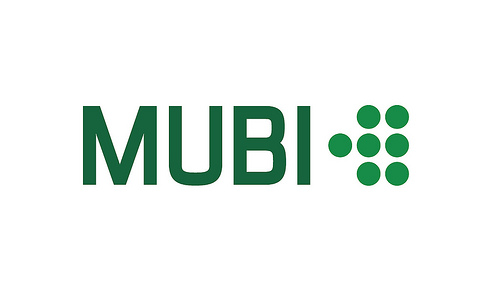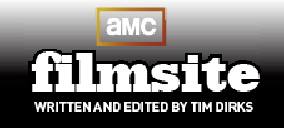Reflections: Mirrors in THE SHINING
20 March 2011
The Shining’s narrative is never fully explained. Yet, there is enough information provided to satisfy a reader of the film: The Overlook Hotel was built on an ancient Native American burial ground, a previous, similar incident of madness took place 10 years before the Torrance family’s arrival, and, over an extended period of isolation, cabin fever can easily take its toll on the mind. Still, huge mysteries, such as the final shot of Jack Torrance in the photograph from 1921, keep the audience reeling (pun intended). Like the maze, the film suggests more possibilities than it does solutions.
The lingering uncertainly is no doubt part of the film’s appeal and lasting success. However, The Shining is not sensational because it holds back a logical explanation of events; The Shining is sensational for the way it holds back logic and allows fantasy to overwhelm reality.
In part, the film uses mirrors as a symbol of reality versus fantasy. Mirrors are more frequently used as the film progresses, however, they are introduced early on. The first inclusion of a mirror is prior to the family’s move to The Overlook when Danny (Danny Lloyd) stands in front of his bathroom mirror talking to Tony. Tony’s disapproves of the family’s move to the hotel, and, after prodding by Danny, shows Danny frightening mental images of The Overlook. At this point in the film, because mirrors have not yet become a recurrent symbol, the placement of this scene in front of a mirror is not overly significant. Retrospectively, it gains importance.
The next significant use of a mirror is in the Torrance’s apartment at The Overlook one month into their stay. As Wendy (Shelley Duvall) brings Jack (Jack Nicholson) breakfast in bed, the camera captures Jack asleep by shooting him through a mirror’s reflection. For half the scene, the camera continues at this angle, capturing the action only through the reflection. During this time Wendy and Jack’s conversation is rather upbeat; Wendy wants to go for a walk outside, but Jack would prefer to write; he is mildly frustrated due to writer’s block. The camera cuts to a close-up of Wendy, being her typical reassuring, positive self, as she comforts her husband. When the camera returns to Jack, it no longer shoots him through the mirror; the camera now captures Jack directly. No longer shot through the reflection, everything in the scene is now flipped; what was once backward in the mirror’s reflection is now corrected. Jack tells Wendy about the “eerie” feeling, like an intense déjà vu, he had when he arrived at The Overlook. Once again, the use of the mirror is not fully understood at this point in the film; however, this use of reflection is striking. The film is beginning to draw viewer’s attention to mirrors, suggesting they are communicating a message that, at this relatively early point in the film, cannot be fully understood yet.
Once Jack enters room 237 and encounters the woman in the tub, the importance of mirrors becomes clear. Initially, the woman in the tub appears beautiful and enticing; Jack is instantly attracted to her. Clearly, this is fantasy, not reality, and, by this point in the film, fantasy has overtaken reality. Only when Jack glances at the woman though the mirror in the bathroom can he get a better handle on what is happening around him. The mirror reflects reality or, at least, something closer to reality than what Jack sees; in the mirror, the woman’s body is decaying and repulsive.
Considering how the mirror is used in the scene with the woman, and applying the same use to the two prior scenes begins to shed more light on how the film handles reality and fantasy. If a mirror reflects reality—at least some element of reality—everything shot though a mirror’s reflection is accurate or trustworthy. Conversely, everything captured without a mirror to filter the truth is untrustworthy. The conversation between Danny and Tony in the bathroom mirror is real. The images Tony presented, eventually, prove accurate. The conversation between Wendy and Jack is half reality and half fantasy. Their brief discussion about Jack’s writing is trustworthy, but Jack’s account of his “eerie” feelings regarding The Overlook is not. Clearly, he is more affected by the hotel than he lets on and, likely, very confused by its hold on him.
The last, and perhaps most memorable, use of mirrors is the infamous “red rum”/murder scene. By this point in the film, the audience is knowingly seeing more fantasy than reality, and is also familiar with mirrors and a repeating symbol in the film. Lost in the fantasy world, Danny writes “red rum” on the bathroom door, with some letters correct and some backward. He repeats the phrase, entranced, until his mother awakes. Through the mirror, she looks at what her son wrote and discerns “red rum” is “murder” spelled backward. Only through the mirror can Wendy see what is real; the mirror cannot reflect fantasy, only reality.
Mirrors, as symbols, point out the increasing imbalance in The Shining between reality and fantasy. The use of mirrors becomes more significant as the film goes on, which is a reminder that reality to slipping away and the uncertain is taking over. Because most of the film is not filtered through a mirror, the audience is left to sift through the fantasy, to find their way through the maze in order to satisfy their curiosity about what happened to the Torrance family at The Overlook hotel.
![]()















Did you realize, that in some scenes there is no reflection in the mirror – but it should be? I do not know how they achieved that in those times where the movie was shot… but in one scene Wendy walks from one side of a room to the other and back again… in the background is a mirror – but Wendy´s reflection does not appear… the mirror just reflects the opposite side of the room.
Another scene Jack is walking through a large hallway with many mirrors on the left side of the shot. The first one do show exact reflextions of Jack walking through the hallway… but in the last one… Jack´s reflection does not appear at all.
I guess this is quite interesting and I could not find something about this in the web (or this article).
Regards
MaxK said this on 22/07/2014 at 9:42 PM |
Whats up very cool site!! Guy .. Excellent .. Wonderful .. I’ll bookmark your web site and take the feeds also…I’m glad to search out numerous helpful information right here in the submit, we want work out more strategies in this regard, thanks for sharing. . . . . .
cheap fags said this on 01/02/2012 at 9:48 PM |